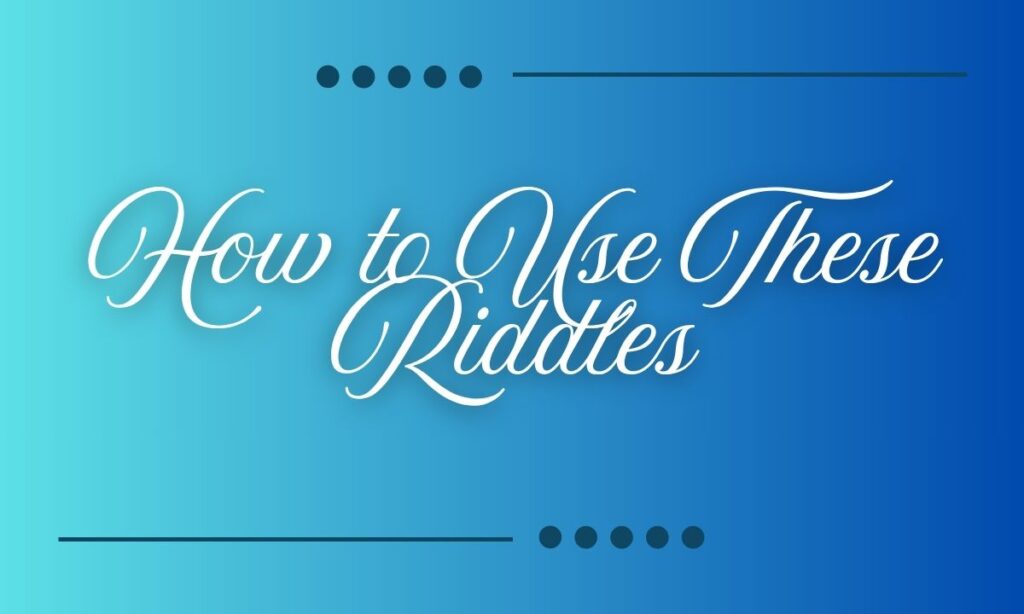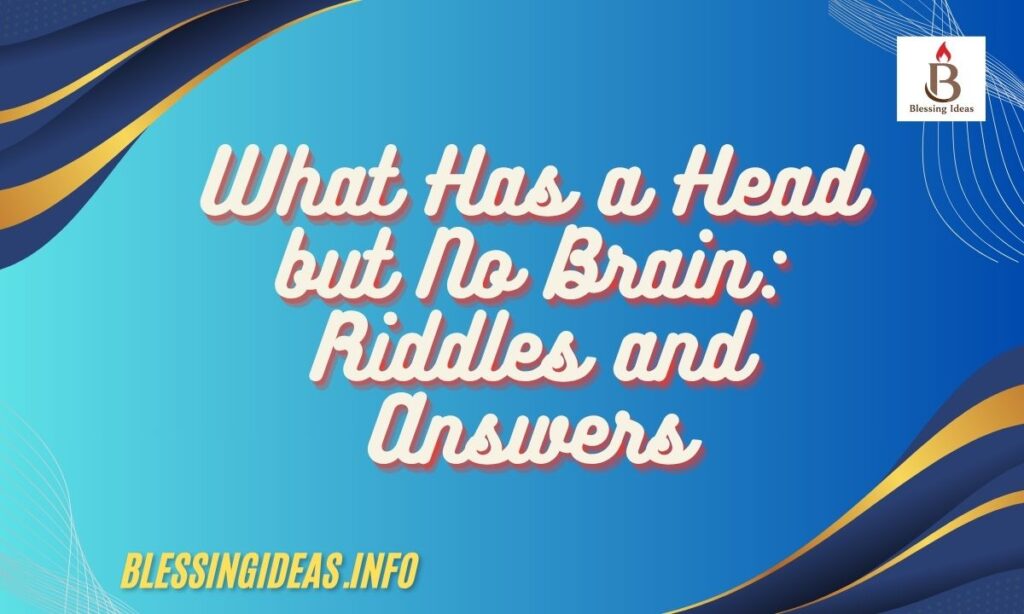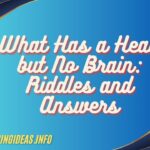Riddles have entertained people for centuries. They make us think differently. They challenge our assumptions. The “head but no brain” riddle is a classic example. It plays with words in clever ways.
This type of riddle uses double meanings. The word “head” has many uses. It can mean the top of something. It can mean the front part. It can mean a leader or a rounded shape. But we usually think of heads as containing brains.
Why These Riddles Are So Popular
People love wordplay. It’s a universal form of entertainment. These riddles work across cultures. They translate well into different languages. The concept remains funny and clever everywhere.
Teachers use them in classrooms. They help students think critically. They encourage creative problem-solving. They make learning fun and engaging. Students remember lessons taught through riddles.
Parents share them with children during car rides. They fill quiet moments with laughter. They create bonding experiences. They pass down traditions from one generation to another. These simple puzzles become cherished memories.
The riddles are also great icebreakers. They work at parties and social gatherings. They help strangers start conversations. They create a relaxed atmosphere. Everyone can participate regardless of age or background.
Understanding the Wordplay
The trick is in the multiple meanings. A pin has a head. A nail has a head. A coin has a head. But none of these objects think. They don’t have consciousness or intelligence.
Our brains automatically associate “head” with living creatures. We think of human heads. We think of animal heads. These contain brains and allow for thought. The riddle exploits this automatic assumption.
When we hear “what has a head,” we search for living things. We might think of animals without brains. We might consider insects or simple organisms. This is exactly what the riddle wants us to do.
The answer surprises us because it’s so obvious. Once revealed, we wonder how we missed it. This moment of realization brings joy. It makes us appreciate the cleverness of language. It reminds us to think outside conventional patterns.
Riddles & Puns Generator
Creating your own riddles is rewarding. You can follow simple patterns. Think of objects with heads. Consider their unique features. Describe them poetically without naming them directly.
Start with common household items. Look around your room. Notice things with tops or rounded parts. These could be “heads” in your riddle. A bottle has a head. A bed has a head. A table can have a head.
Add descriptive clues about function. What does the object do? How is it used? What materials is it made from? These details help solvers narrow down possibilities. They make the riddle fair and solvable.
Use rhyming when possible. It makes riddles more memorable. It adds a musical quality. It increases entertainment value. But don’t force rhymes if they don’t work naturally.
Test your riddles on friends. See if they’re too easy or too hard. Adjust the clues accordingly. A good riddle should be challenging but achievable. It should make solvers feel clever when they find the answer.
Puns add extra fun to riddles. They play with sound and meaning. They create layers of humor. A pin might be described as something that “pins things down.” A nail might be something you “nail” perfectly.
What Has a Head but No Brain Riddles with Answers
Classic Everyday Objects
A coin has two sides. One side shows a head. This is where important faces appear. Presidents and monarchs look out from coins. But the coin doesn’t think or reason. It has no consciousness whatsoever.
A pin is tiny but useful. It holds fabric together. Its head is small and round. You can grip it between your fingers. It fastens things securely. But it possesses no intelligence at all.
A nail serves construction purposes. Its head is flat and wide. You hammer it into wood. It holds boards together firmly. It’s essential for building. Yet it cannot think or plan anything.
A match brings fire to life. Its head contains chemicals. Strike it against a rough surface. It bursts into flame immediately. It lights candles and stoves. But it has no mind of its own.
Kitchen and Dining Items
A bottle holds various liquids. Its head is the cap or top. You twist it to open. You pour out the contents. It comes in many sizes. But it never thinks about what it contains.
A spoon scoops up food. Its head is the rounded part. It carries soup to your mouth. It stirs ingredients together. It measures out portions. Yet it has no awareness of taste.
Beer forms a foamy head. This appears when you pour it. The bubbles rise to the top. They create a creamy layer. It’s a sign of freshness. But foam cannot think or feel.
A faucet controls water flow. Its head is where water emerges. Turn it left or right. Water starts or stops flowing. It’s in every kitchen and bathroom. But it has no thoughts about conservation.
Tools and Hardware
A hammer pounds things flat. Its head is heavy metal. It drives nails into surfaces. It pulls nails out too. Carpenters rely on it daily. Yet it cannot plan any project.
A screwdriver turns screws tight. Its head fits into screw tops. Different shapes match different screws. It assembles furniture and machines. It’s found in every toolbox. But it doesn’t understand mechanics.
An axe splits wood apart. Its head is sharp and heavy. It chops through logs easily. It requires strength to swing. Lumberjacks depend on it. Yet it cannot decide which tree to cut.
A wrench grips nuts firmly. Its head adjusts to different sizes. It tightens bolts securely. It prevents things from loosening. Mechanics use it constantly. But it has no knowledge of engineering.
Plants and Growing Things
A sunflower reaches toward light. Its head is bright and yellow. It follows the sun’s movement. It produces nutritious seeds. Bees love visiting it. Yet it has no awareness of beauty.
Garlic grows beneath the soil. Its head contains multiple cloves. It adds flavor to dishes. It has health benefits too. Cooks use it in many recipes. But it cannot taste anything itself.
Lettuce forms a rounded head. Its leaves curl inward tightly. It’s crispy and refreshing. It’s the base of many salads. It grows in gardens everywhere. Yet it has no sense of crunchiness.
Broccoli looks like tiny trees. Its head is clustered florets. It’s packed with vitamins. It’s green and nutritious. Children often dislike it initially. But it doesn’t care about opinions.
Musical Instruments
A drum produces rhythmic sounds. Its head is stretched tight. You strike it with sticks. It creates beats and patterns. It’s essential in bands. Yet it cannot compose any music.
Guitar tuning pegs adjust pitch. Their heads twist strings tighter. They fine-tune each note. They keep the guitar sounding right. Musicians adjust them constantly. But they don’t hear the music they create.
Household Items
A pillow supports your head. Its own head is soft and fluffy. It helps you sleep comfortably. It comes in various shapes. It cradles you at night. Yet it never dreams of anything.
A bed has a headboard. This head protects the wall. It provides back support. It can be decorative. It defines the bed’s style. But it never sleeps or rests itself.
A broom sweeps floors clean. Its head is made of bristles. It gathers dust and dirt. It reaches into corners. It keeps homes tidy. Yet it doesn’t mind getting dirty.
A chair has a top portion. This head supports your back. It can be padded or hard. It determines comfort level. It’s essential for sitting. But I never gets tired of standing.
Office and Writing Supplies
A pencil writes and draws. Its head contains the eraser. It removes mistakes easily. It’s usually pink or white. It’s found on most pencils. Yet it cannot correct its own errors.
A pin cushion holds pins safely. Its head is soft and padded. It prevents pin loss. It keeps sewing areas organized. It can be decorative. But it feels no pain from piercing.
A thumbtack fastens papers up. Its head is flat and wide. It pushes into bulletin boards. It holds notices securely. It’s in every office. Yet it doesn’t read what it displays.
A headline announces news. This head tops the article. It grabs reader attention. It summarizes the story. It’s bold and prominent. But it doesn’t understand the news it presents.
Scientific and Medical Items
A thermometer measures temperature. Its head contains mercury. It shows if you have fever. It’s essential for health checks. Doctors rely on it. Yet it cannot feel hot or cold.
A test tube holds chemicals. Its head is the open top. Scientists pour liquids in. Experiments happen inside. It’s made of special glass. But it doesn’t understand chemistry.
A pill helps cure illness. Its head is rounded and smooth. You swallow it with water. It dissolves in your stomach. It delivers medicine effectively. Yet it has no healing knowledge.
Sports Equipment
A golf club hits balls far. Its head strikes the ball. Different heads create different shots. It determines distance and direction. Golfers choose clubs carefully. But the club doesn’t play the game.
An arrow flies through the air. Its head is sharp and pointed. It pierces the target. It requires skill to shoot. Archers practice constantly. Yet the arrow doesn’t aim itself.
Bathroom Fixtures
A shower head sprays water. It disperses water into droplets. It can be fixed or handheld. It determines the spray pattern. It makes showering pleasant. But it doesn’t enjoy getting wet.
Miscellaneous Items
A magnifying glass enlarges things. Its handle head holds the lens. Detectives use it for clues. It makes small things visible. It helps with detailed work. Yet it sees nothing on its own.
A sprinkler waters gardens. Its head rotates in circles. It distributes water evenly. It keeps plants healthy. It works automatically. But it doesn’t know what it’s watering.
A firecracker makes loud noises. Its head ignites first. It explodes with bright colors. It celebrates special occasions. People enjoy the display. Yet it has no sense of celebration.
Comparison Table of Common Answers
| Object | Type of Head | Primary Use | Material | Common Location |
| Coin | Face side | Currency | Metal | Wallet/Purse |
| Pin | Round top | Fastening | Metal | Sewing kit |
| Nail | Flat top | Construction | Metal/Steel | Toolbox |
| Match | Chemical tip | Fire-starting | Wood/Paper | Kitchen drawer |
| Hammer | Heavy end | Pounding | Metal/Steel | Garage/Workshop |
| Lettuce | Leafy ball | Food | Organic | Refrigerator |
| Pillow | Soft cushion | Sleeping | Fabric/Foam | Bedroom |
| Bottle | Cap/Top | Storage | Glass/Plastic | Kitchen/Bathroom |
| Drum | Stretched skin | Music | Leather/Plastic | Music room |
| Arrow | Pointed tip | Shooting | Metal/Wood | Archery range |
How to Use These Riddles

Share them at family dinners. They lighten the mood. They get everyone talking. They create shared laughter. They make meals more enjoyable.
Use them in classrooms for engagement. They wake up tired students. They introduce lessons creatively. They reward correct answers with praise. They make learning memorable.
Post them on social media. They generate comments and shares. They show your playful side. They connect you with friends. They brighten people’s feeds.
Include them in party games. They work for all ages. They require no special equipment. They keep guests entertained. They break awkward silences.
Tell them during long car trips. They pass the time quickly. They keep children occupied. They prevent boredom. They create travel memories.
Creating Your Own Variations
Think about object characteristics. What makes them unique? What features do they have? How are they used daily? What materials compose them?
Consider less obvious answers. Not everything needs a literal head. You can be more creative. Think metaphorically about tops and fronts. Expand the definition playfully.
Add difficulty levels. Make some riddles easy for children. Create harder ones for adults. Adjust the clues accordingly. Match the audience appropriately.
Incorporate cultural elements. Reference local objects or customs. Make riddles relevant to your region. This personalizes the experience. It makes riddles more relatable.
Benefits of Riddle-Solving
Riddles improve cognitive function. They exercise the brain regularly. They strengthen neural connections. They enhance memory retention. They keep their minds sharp.
They teach lateral thinking. Solutions aren’t always obvious. You must consider alternatives. You challenge your assumptions. You develop flexibility in thought.
They build vocabulary naturally. Riddles use descriptive language. They introduce new words contextually. They make learning effortless. They expand expression abilities.
They boost confidence levels. Solving riddles feels rewarding. It proves your intelligence. It encourages persistence. It builds problem-solving courage.
They enhance social skills. Sharing riddles starts conversations. Working together builds teamwork. Laughing together strengthens bonds. They create positive interactions.
Historical Context
Riddles date back thousands of years. Ancient cultures loved them. They appear in religious texts. They were tests of wisdom. Kings and philosophers posed them.
The Sphinx asked a famous riddle. It guarded ancient Thebes. It killed those who answered wrong. Oedipus solved it correctly. This story remains legendary today.
Medieval courts enjoyed riddles. Jesters entertained with wordplay. Nobles competed in wit. Riddles demonstrated education. They were signs of sophistication.
Folk traditions preserved riddles. Parents taught children orally. They passed through generations. They adapted to changing times. They remain relevant today.
Frequently Asked Questions
What is the most common answer to “What has a head but no brain?”
A coin is the classic answer, featuring a head side with faces of leaders but having no ability to think.
Are these riddles suitable for children?
Yes, these riddles are perfect for kids as they’re simple, fun, and help develop critical thinking skills.
Can I use these riddles in educational settings?
Absolutely, teachers often use these riddles to engage students and encourage creative problem-solving in classrooms.
How do I make up my own head riddles?
Look around for objects with tops or rounded parts, then describe their features without naming them directly.
Why are these riddles considered brain teasers?
They challenge our automatic associations with the word “head” and force us to think beyond literal meanings.
Conclusion
These riddles bring joy to millions. They’re simple yet profound. They work across all ages. They require no special skills. They just need imagination.
The “head but no brain” concept is endlessly adaptable. New answers emerge constantly. Everyday objects become puzzle subjects. Creativity knows no limits. Anyone can participate.






